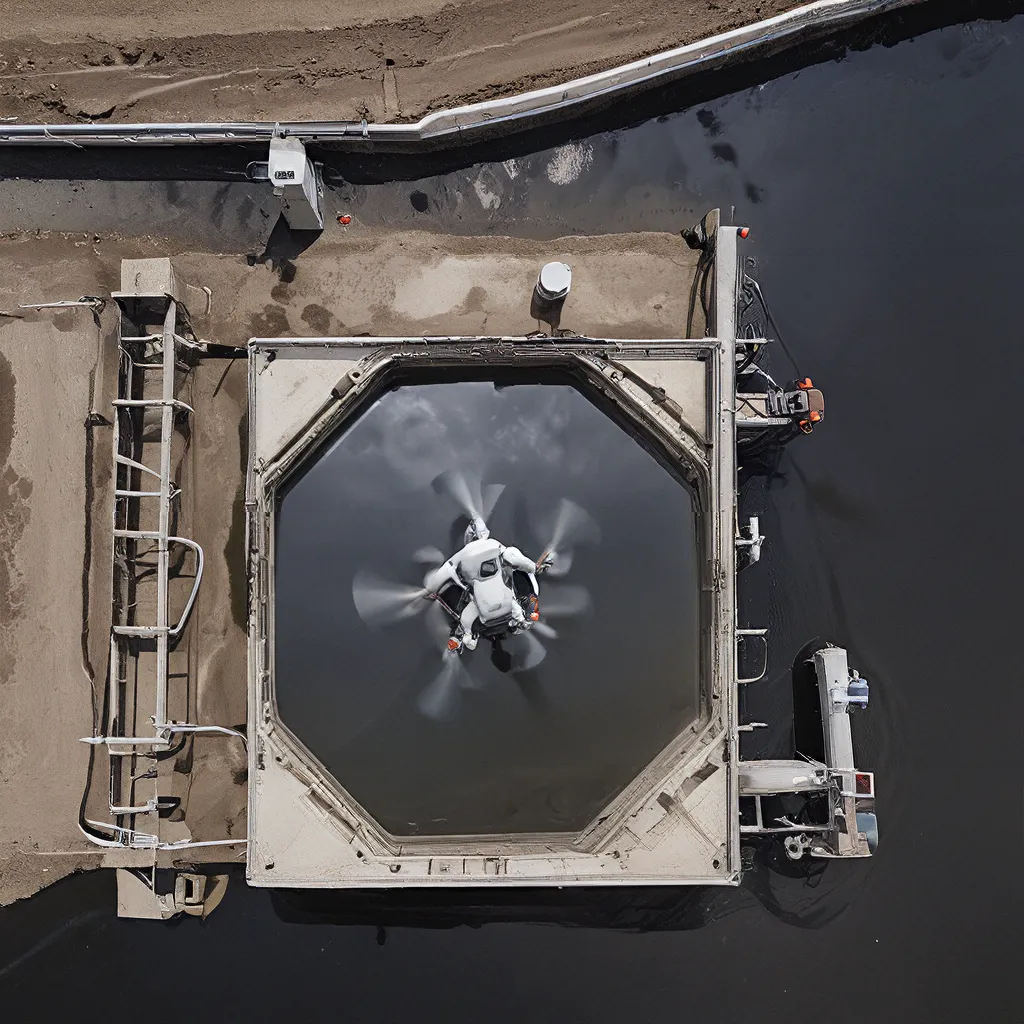
As an avid technology enthusiast, I’ve been fascinated by the way drones are transforming various industries. But it wasn’t until I learned about their impact on the world of wastewater treatment that I truly realized the game-changing potential of this technology.
Imagine a world where we could inspect the intricate network of pipes, tanks, and treatment facilities without putting our brave workers in harm’s way. That’s the reality we’re living in, thanks to the rise of drone technology. And let me tell you, it’s nothing short of remarkable.
The Dawn of Drone Inspections
Gone are the days when inspecting a wastewater treatment plant required workers to scale scaffolding, crawl into confined spaces, or dangle precariously from ropes. Drones have completely revolutionized the way we approach these crucial tasks.
Inspection drones, like the Elios 3, are equipped with a range of cutting-edge features that make them perfect for the job. With their LiDAR sensors and 4K cameras, these nimble UAVs can navigate the most challenging environments, capturing detailed visual data that would have been nearly impossible to obtain otherwise.
But the benefits of drone inspections go far beyond just the data collection. By keeping our workers out of harm’s way, these remarkable machines are drastically improving the safety of wastewater treatment operations. Imagine the peace of mind that comes with knowing your team doesn’t have to risk their lives just to ensure the proper functioning of your facility.
The Transformation Begins
As I delved deeper into the world of wastewater treatment, I was amazed to discover the sheer breadth of applications for drone technology in this industry. From monitoring water quality to inspecting underground pipelines, these aerial marvels are revolutionizing the way we approach every aspect of this critical infrastructure.
One of the most fascinating use cases I stumbled upon was the ability of drones to map and survey entire wastewater treatment facilities. With their advanced LiDAR scanning capabilities, these drones can create highly detailed 3D models of the entire system, allowing operators to virtually explore every nook and cranny without ever leaving their desks.
And the benefits don’t stop there. By leveraging the power of drones, wastewater treatment facilities can now conduct more frequent inspections at a fraction of the cost, dramatically reducing the risk of catastrophic failures and ensuring the long-term integrity of their infrastructure.
Embracing the Future
As I spoke with the experts at Alpha Wastewater, it became clear that the industry is eagerly embracing the transformative potential of drone technology. They shared stories of how drones have helped them identify and address issues before they spiral out of control, saving them both time and money in the process.
But the true magic of drones in wastewater treatment lies in their ability to adapt and evolve. The Elios 3, for example, can be equipped with a range of specialized payloads, from ultrasonic thickness sensors to radiation detectors. This ensures that operators have the right tool for the job, no matter the specific challenge they’re facing.
And as the technology continues to advance, I can only imagine the wonders we’ll witness in the years to come. Autonomous drone swarms scanning every inch of a facility, AI-powered systems that can predict and prevent issues before they arise, and virtual reality interfaces that allow operators to feel like they’re right there in the thick of it – the possibilities are truly endless.
The Future is Bright
As I wrap up my exploration of this fascinating intersection of wastewater treatment and drone technology, I can’t help but feel a sense of excitement and optimism. This is a industry that has long been overlooked, but now it’s at the forefront of innovation, and I can’t wait to see what the future holds.
So, the next time you flush your toilet or turn on your tap, remember the unsung heroes working tirelessly behind the scenes to ensure that our water is clean, safe, and ready for use. And know that with the help of drones, they’re making their jobs safer, more efficient, and more effective than ever before.
The future of wastewater treatment is here, and it’s taking to the skies. Strap in, because the ride is just getting started.